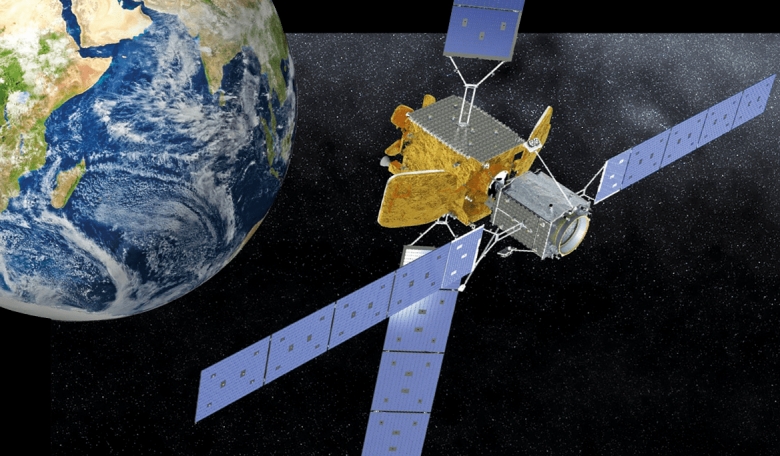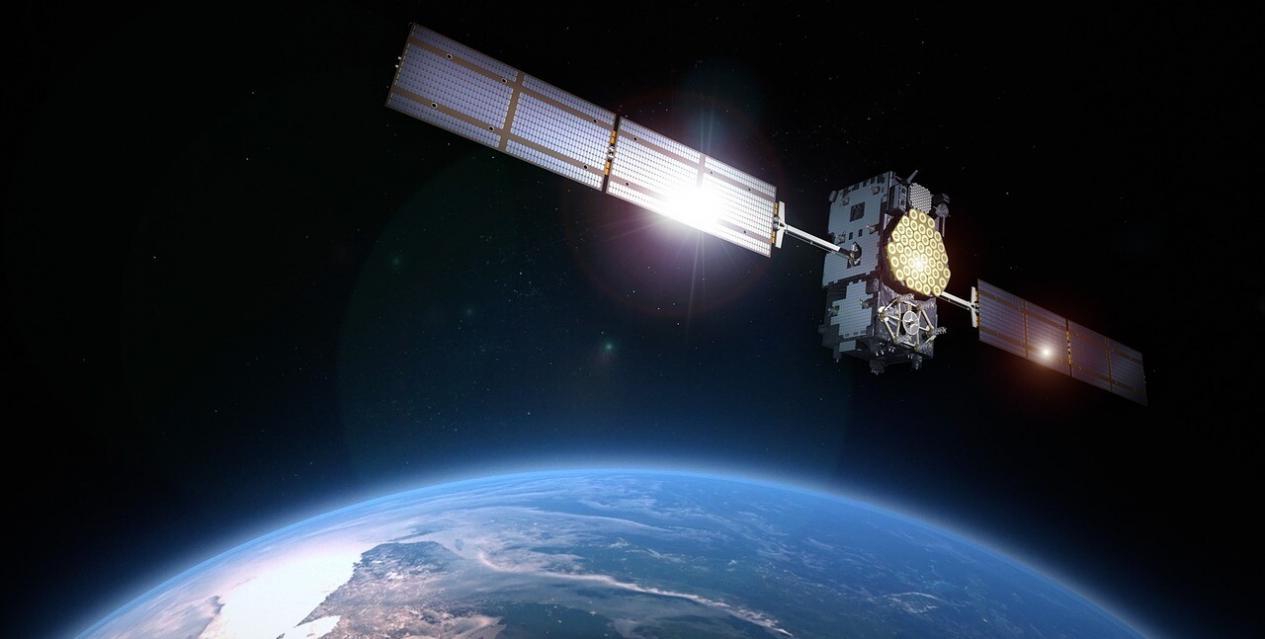All Geosynchronous Satellites Must Have Which of the Following
A true geostationary satellite must be a circular orbit in the equatorial plane at an altitude of 35768 km. Such a type of satellite which synchronizes its speed with the speed of rotation of earth is called a geosynchronous satellite.

Gps Satellite Tracking Teletrac Tracking Over 200 00 Vehicles Fleet Tracking Gps Satellites
Me 598 x 1024 kg.

. Cheaper to put them in orbit - less energy needed. What is the altitude that a satellite must have for it ir order to have the same location relative to earth at all times geosynchronous orbit where the orbital period is the same as 1 earth day. Which of the following is true about geosynchronous orbiting satellites.
Which of the following statements is are true. Geosynchronous as opposed to geostationary satellites include a lot of variations. In order for that to happen it must have the same period as the Earth.
Two spaceships S1 and S2 with masses M1 and M2 M1. These two requirements make the satellite appear in an unchanging area of visibility when viewed from. The aptly titled geosynchronous orbit is described in detail.
Geosynchronous satellites orbit the Earth at a distance of 42 000 km from the Earths center. The orbit of a geosynchronous satellite at an inclination from the perspective of an off earth observer and of an observer rotating around the earth at its spin rate. Your weight on a neutron star will be much greater than that on.
A geosynchronous orbit has the following properties. Can cover the whole of the Earths surface in their orbits -. To maintain an orbit that is 22223 miles 35786 km above Earth the satellite must orbit at a speed of about 7000 mph 11300 kph.
Therefore the satellites period of revolution must be equal to the period of rotation of the Earth. It is not possible to have a geostationary orbit that is inclined with respect to the equator. 102203 From Earth a satellite in geosynchronous orbit appears to hover over one spot on the Equator.
Along with this orbital period requirement to be geostationary as well the satellite must be placed in an orbit that puts it in the vicinity over the equator. A geosynchronous satellite orbits above the equator of Earth in a circular orbit remaining in a fixed position with respect to observers on the ground. Greater detail can be seen on the Earths surface - good for mapping.
A polar geosynchronous orbit is possible. Three such satellites each separated by 120 degrees of longitude can provide coverage of the entire plane the north and south geographic poles. Physics questions and answers.
The orbit of geosynchronous satellites can. For Earth observation this allows the satellite to look at how much a region changes over months or years. Their angular speed at this height is the same as the rotation rate of the Earth so they appear stationary at certain locations in the sky.
A Geostationary Orbit GSOis a geosynchronous orbit with an inclination of zero. When calculations are made to launch a certain geosynchronous satellite and the satellite is. That means a receiving dish on the Earth can point at the satellite at one spot in the sky and not have to track its.
It does so by maintaining an orbital speed exactly equal to the speed of rotation of earth. Ageosynchronous satelliteis asatelliteingeosynchronous orbit with an orbital period the same as the Earths rotation periodDifferent orbits. To maintain an orbit that is 22223 miles 35786 km above Earth the satellite must orbit at a speed of about 7000 mph 11300 kph.
A All geosynchronous orbiting satellites must orbit at the same height above the earths surface b All geosynchronous orbiting satellites must orbit with the same orbital speed c Each geosynchronous orbiting satellites stays over some set position on earth. Signal strength will have a higher intensity on the Earths surface. A Geosynchonous Orbit GEOtakes a satellite around the Earth at a rate of once per day keeping it roughly in the same area over the ground.
The term geosynchronous refers to the satellites orbital period which enables it to be with the rotation of the Earth geo-. Re 638 x 106 m a What altitude above the Earths surface would a satellite need to be for a geosynchronous orbit. The aptly titled geosynchronous orbit is described in detail.
At an altitude of 124 miles 200 kilometers the required orbital velocity is just over 17000 mph about 27400 kph. 1436 minutes one sidereal day Semi-major axis. The term geosynchronous means that the orbital period is the same as the rotational period of the earth.
A satellite in geosynchronous orbit can see one spot of the planet almost all of the time. They all travel in the same circle and the difference between them is the phase or in technical terms the anomaly. A single geostationary satellite is on a line of sight with about 40 percent of the earths surface.
Geosynchronous satellites have an angular velocity that matches the rotation of the Earth and follow circular orbits in the equatorial. Escape speed of S2 will have to be greater than that of Si. 1 A geosynchronous orbit is an orbit where a satellite stays over the same geographical point on the Earth.
It is perfectly possible to have a geosynchronous orbit that is inclined with respect to the equator. At an altitude of 124 miles 200 kilometers the required orbital velocity is just over 17000 mph about 27400 kph. All geostationary satellites are geosynchronous satellites.

Planetary Resources Asteroid Mining Spacecraft Planetary

Really Enormous Elevator Could Take You To Space Em 2020 Espaconave

Six Weather Satellites Are All Set To Be Launched By Noaa Weather Satellite Global Weather Spacex Falcon Heavy

Extending The Life Of Geostationary Orbit Satellites Room The Space Journal
What Are Geostationary And Geosynchronous Satellites Quora

Space Elevator Spaceref Space Tourism Nasa Engineer Space News

Nasa Space Elevator Challenge One Option The Pods In This Image Are Not Very Appealing To The Eye But The Supportin Space Travel Space Exploration Astronomy
The Lifespan Of Orbiting Satellites European Space Imaging

Planets Planets And More Planets Page 8 Star Wars Edge Of The Empire Rpg Ffg Community Star Wars Planets Star Wars Infographic Planets

Polar Orbit Vs Sun Synchronous Orbit Gis Geography

You Enter The Elevator Then You Press The Button And Prestom 200 Km H You Re In Space Aboard The Intern Space Exploration Space Travel Space And Astronomy

Astronomy Or Astrology What Is The Difference Indian Space Research Organisation Space And Astronomy Nasa Space Program

India S Gslv Mk Iii Paper Models Axm Version Axm Paper Space Scale Models Blog In 2020
Astronomy Picture Of The Day Mercury Planet Planets Astronomy Pictures

Japanese Company Plans Space Elevator By 2050 Space Travel Elevation Space Tourism
How Many Satellites Are In Geostationary Orbit Quora

Yaponiya Namerena Zapustit Kosmicheskij Lift K 2050 Godu Space Exploration Space Travel Space Science


Comments
Post a Comment